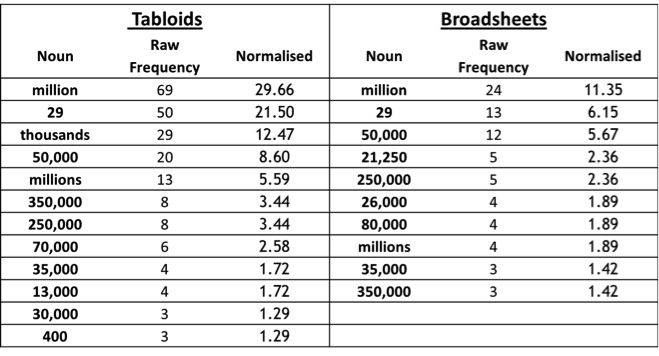 In a week in which a government minister described parts of Britain as “swamped” by migrants and “under siege”, it is clear that the language we use to talk about migration is vitally important.
In a week in which a government minister described parts of Britain as “swamped” by migrants and “under siege”, it is clear that the language we use to talk about migration is vitally important.
Many commentators, especially those who are broadly “pro-migration”, blame the media for creating a public discourse of hostility to immigration through its use of inflamed language and scare-mongering statistics. Others, especially those who are broadly “anti-migration”, defend the media as simply responding to public fears and concerns, reflecting back an issue on which voters feel passionate. But what evidence is there about the content of media messages on migration?
Most of the research on this issue is drawn from fairly small samples of data: typically either just one or two newspapers or very concentrated timeframes. Now, however, in the age of “Big Data”, digital tools enable researchers to mine much larger bodies of material. The Migration in the Media project at Oxford’s Migration Observatory does just this.
This project was the focus of the launch of Series 5 of COMPAS’s Breakfast Briefings. As described in previous blogposts, our Breakfast Briefings are aimed to bring evidence to bear on policy debates relating to migration. The Migration Observatory’s Will Allen opened our series by providing an insight into how the media frames these debates.
Will presented a piece of research, co-authored with Olivia Vicol, in which all UK print media mentions of Bulgaria, Bulgarians, Romania or Romanians were analysed, in the year ending in December 2013 – that is, in the year leading up to the lifting of transitional controls on labour migrants from these two new EU states. A total of 4,441 news items – over 2.8 million words – were trawled to get a detailed descriptive picture of how the British media portrayed the issue.
You can listen to Will’s briefing as a podcast here, look at his slides here, and download his briefing summary here.
Images of deviance
For me, there were two key points to take home from Will’s briefing. The first is about how Bulgarians and Romanians were represented to the British public. Both groups, Will showed, were portrayed overwhelmingly through the lens of migration – although other topics, such as football, did crop up. And both groups, but especially Romanians, were consistently associated with deviance and criminality. A large number of the news items focus on arrests for offences from shoplifting to murder and on crime gangs, with particular attention given to stories relating to child abductions.
The extent to which these images create or reinforce prejudices against central and eastern Europeans and their impact on policy-making is beyond the remit of the Observatory’s empirical work. But, for me, I think that these findings show the importance of a research agenda around the racialisation of the figure of the migrant, and how that connects to older forms of intolerance, including towards Gypsies, Jews and eastern Europeans.
The numbers game
The second key point is about the significance of numbers. Several different estimates were made in 2013 of the likely number of Bulgarians and Romanians to arrive after 1 January. Behind these estimates lurked the memory of the period after 2004, when Poland and other central and eastern European countries joined the EU, with the UK choosing not to impose transitional controls: most estimates then had hopelessly undercounted likely arrivals. The subsequent influx, and its massive impact on the demography and labour market of the whole of the UK – and especially areas of previously relatively low migration – has become an iconic reference point in the immigration debate. In 2013, then, experts were trapped between a desire not to be caught napping again and a sense of how the numbers could inflame an already incendiary public issue.
Newspapers, however, reported a huge range of numbers in 2013.

Will gave two examples of reports using such numbers, one from a tabloid – “Next year 29 million Bulgarians and Romanians will gain the right to live and work unrestricted in Britain under European "freedom of movement" rules yet ministers refuse to disclose how many may come here” – and one from a broadsheet – “the prospect of tens of thousands of Bulgarians and Romanians arriving after January 1”. The estimate made by the anti-migration lobby group MigrationWatch – 50,000 a year – seems to have had particular attention in both tabloids and broadsheets.
The strengths and weaknesses of the different predictions, and how they have related to subsequent reality, is a topic beyond Will’s remit. However, the Migration Observatory worked throughout 2013 to highlight the fact that there is currently no robust methodology to make accurate predictions. In 2014, it has published a series of Commentaries on this topic, showing that the evidence is complex and contradictory and that it will be some time before we have a clear picture. (For related material from the Observatory, see a new Commentary on what we know about EU migration to the UK and the Observatory’s resources relating to migration to the UK, including a policy primer by the Cathryn Costello (Oxford Law) on the UK, EU citizenship and Free Movement of Persons.)
The research context
 Finally, while the policy and political context of this briefing should be clear from the above, it is worth saying a few words about the intellectual context. The project forms part of a larger scholarly move to apply textual analysis to social scientific (and especially political) questions, by harnessing the growing capacity of digital tools for data aggregation – as described by Will in this blogpost. “Corpus linguistics” (the quantitative analysis of such bodies of text) has the key virtue of comprehensiveness compared to other methods – and Will spells out this advantage, as well as some key limitations, in this blogpost and this academic paper. Among the key reference points for this approach, see the ESRC Centre for Corpus Approaches to Social Science (CASS) at Lancaster University and the pioneering work there by Costas Gabrielatos and Paul Baker.
Finally, while the policy and political context of this briefing should be clear from the above, it is worth saying a few words about the intellectual context. The project forms part of a larger scholarly move to apply textual analysis to social scientific (and especially political) questions, by harnessing the growing capacity of digital tools for data aggregation – as described by Will in this blogpost. “Corpus linguistics” (the quantitative analysis of such bodies of text) has the key virtue of comprehensiveness compared to other methods – and Will spells out this advantage, as well as some key limitations, in this blogpost and this academic paper. Among the key reference points for this approach, see the ESRC Centre for Corpus Approaches to Social Science (CASS) at Lancaster University and the pioneering work there by Costas Gabrielatos and Paul Baker.
Further information
Projects
- Migration in the Media, Migration Observatory.
- Seeing Data: Are Good Big Data Visualisations Possible? Dr Helen Kennedy, University of Leeds, Andy Kirk, Visualising Data Ltd, and William Allen, COMPAS. For AHRC.
- Big Talk about Big Data: Discourses of ‘Evidence’ and Data in British Civil Society, William Allen. For EPSRC & Communities and Culture Network+.
- Big Data, Big Visions: Challenges and Opportunities for British Civil Society Engagement with Data-Driven Research, William Allen. For Toyota Foundation (Japan).
Reports:
- ‘Portrayals of Immigrants, Migrants, Asylum Seekers and Refugees in National British Newspapers, 2010 to 2012’. Migration Observatory Report: COMPAS, University of Oxford. (Including online visualisation tool and introductory video.)
- William Allen and Scott Blinder (2013). 'Jessica Ennis, Mo Farah, and Identity Language in the British Press: A Case Study in Monitoring and Analysing Print Media'. Migration Observatory Report: COMPAS, University of Oxford.
- Dora-Olivia Vicol and William Allen (August 2014) ‘Bulgarians and Romanians in the British National Press’ Migration Observatory, COMPAS, University of Oxford.
- Allen, William (2012). 'UK Migration, Political Elites, and Public Perceptions: Possibilities for Large-Corpus Textual Analysis of British Print Media Coverage'. Scoping Study Migration Observatory, COMPAS, University of Oxford.
Papers and talks:
- Scott Blinder and Anne-Marie Jeannet (August 2014) ‘Numbers and Waves, the Illegal and the Skilled: The Effects of Media Portrayals of Immigrants on Public Opinion in Britain’. SSRN. (Short version on the COMPAS blog.)
- Scott Blinder and Will Allen (April 2014) ‘Constructing Immigrants: Portrayals of Migrant Groups in British Newspapers, 2010-2012’, Midwest Political Science Association.
Blogposts:
- Mikal Mast (December 2013) ‘What do we talk about when we talk about migration?’. COMPAS blog.
- William Allen (November 2013) ‘Media, Public Opinion, Migration Policy: Multi- and Inter-Disciplinary Notes’, COMPAS blog.
- Will Allen and Scott Blinder (September 2013) ‘”Failed” Asylum-Seekers and the UK Press’. Border Criminologies.
- William Allen (August 2013) ‘Documenting how immigrants are described in the British press: Why does comprehensiveness matter? COMPAS blog.
- Will Allen (March 2013) ‘What Kinds of Immigrants Come or Stay? Illegality and UK Tabloid Portrayal of Immigrants’ COMPAS blog.
- Scott Blinder (December 2012) ‘Immigrants, Asylum Seekers, and Ethnic and Religious Minorities in the Leveson Report’ COMPAS blog.
- Will Allen (September 2012) ‘Whose Dreams Are Alive? Thinking about News Media as Stories’ COMPAS blog.
- Scott Blinder (July 2012) ‘What do they talk about when they (Miliband and Cameron) talk about immigration?’ COMPAS blog.
- Rob McNeil (June 2012) ‘Sticks and stones…’ COMPAS blog.
Interviews:
- Louisa Taylor interviewing Will Allen (October 2014) ‘What are we talking about when we talk about migrants?’ The Migrationist.
Next month
Meanwhile, our Breakfast Briefing series continues in December with Peter Neumann, Director, International Centre for the Study of Radicalisation and Rachel Briggs, Director of Research and Policy, Security and Counter-Extremism, Institute for Strategic Dialogue. They will be exploring why westerners are drawn to fight with IS in Syria and Iraq, and what we can do in response.